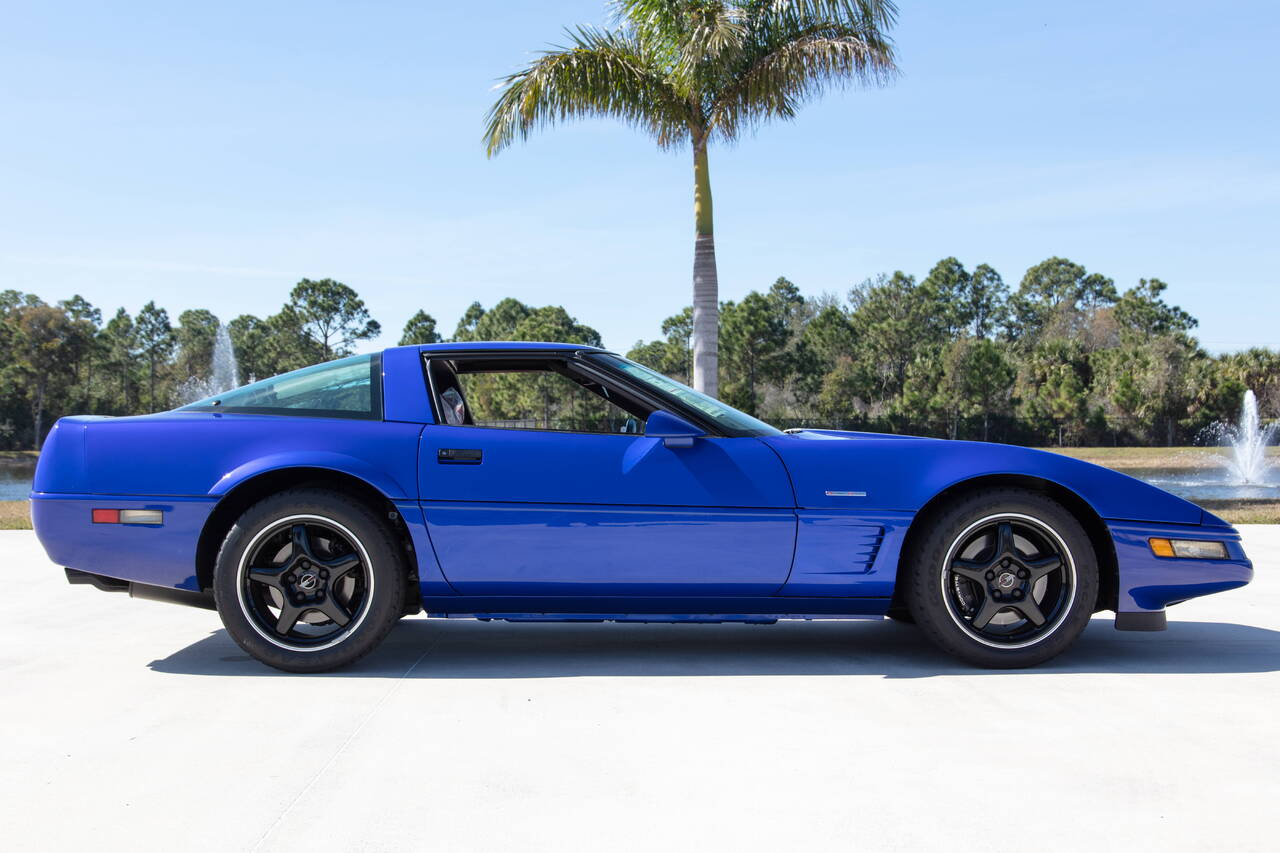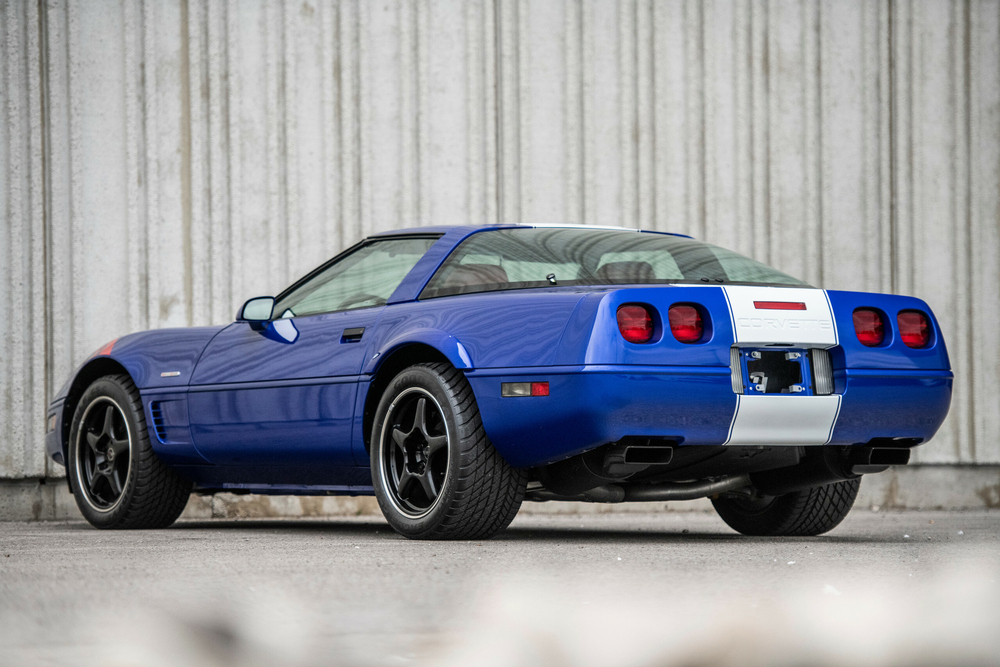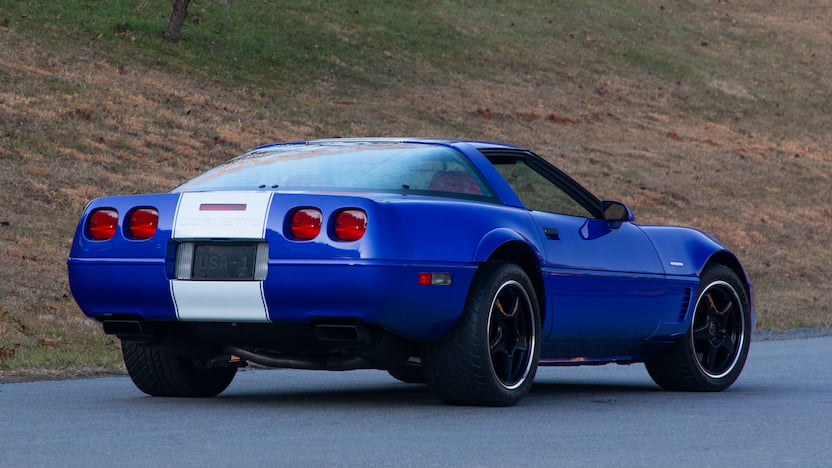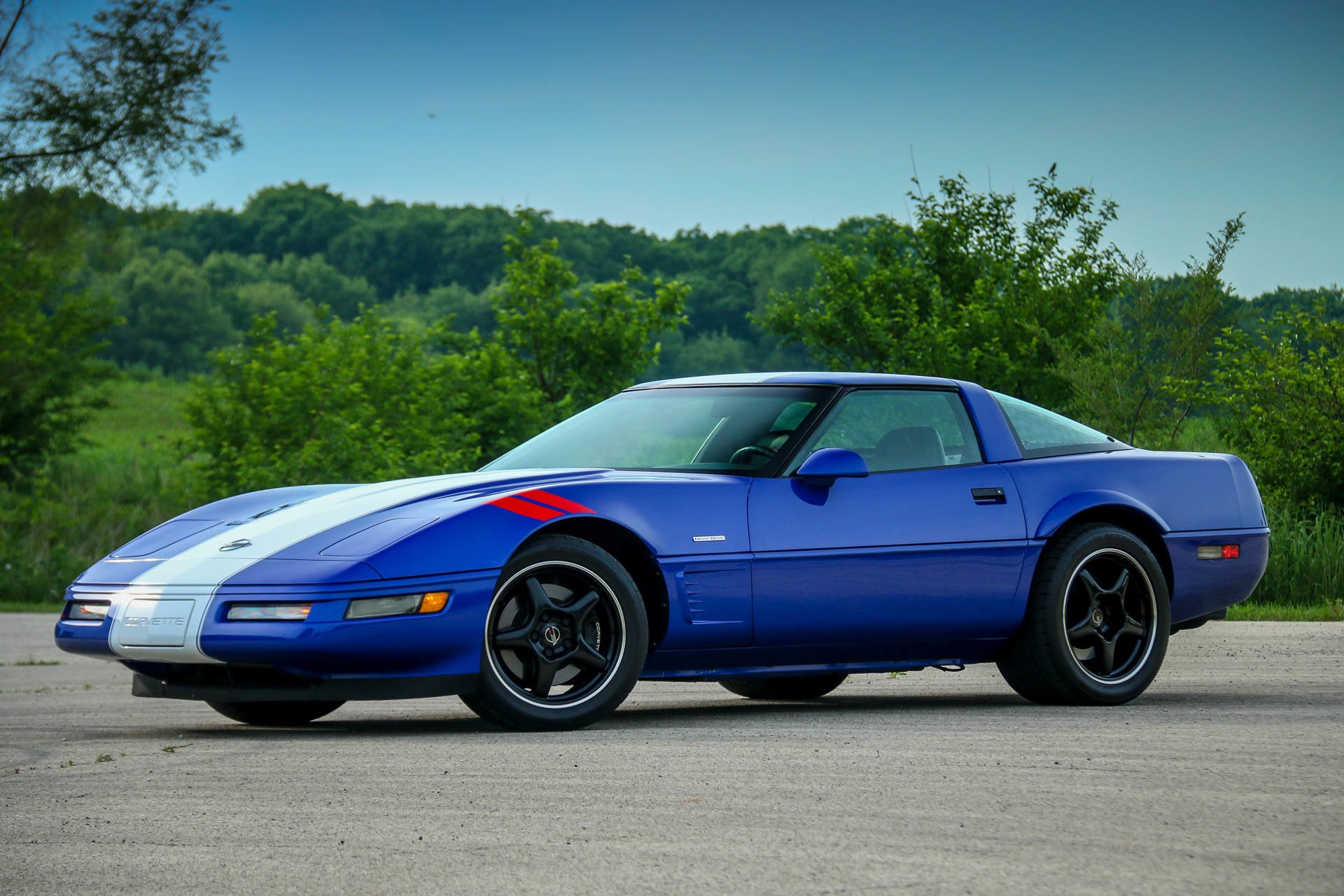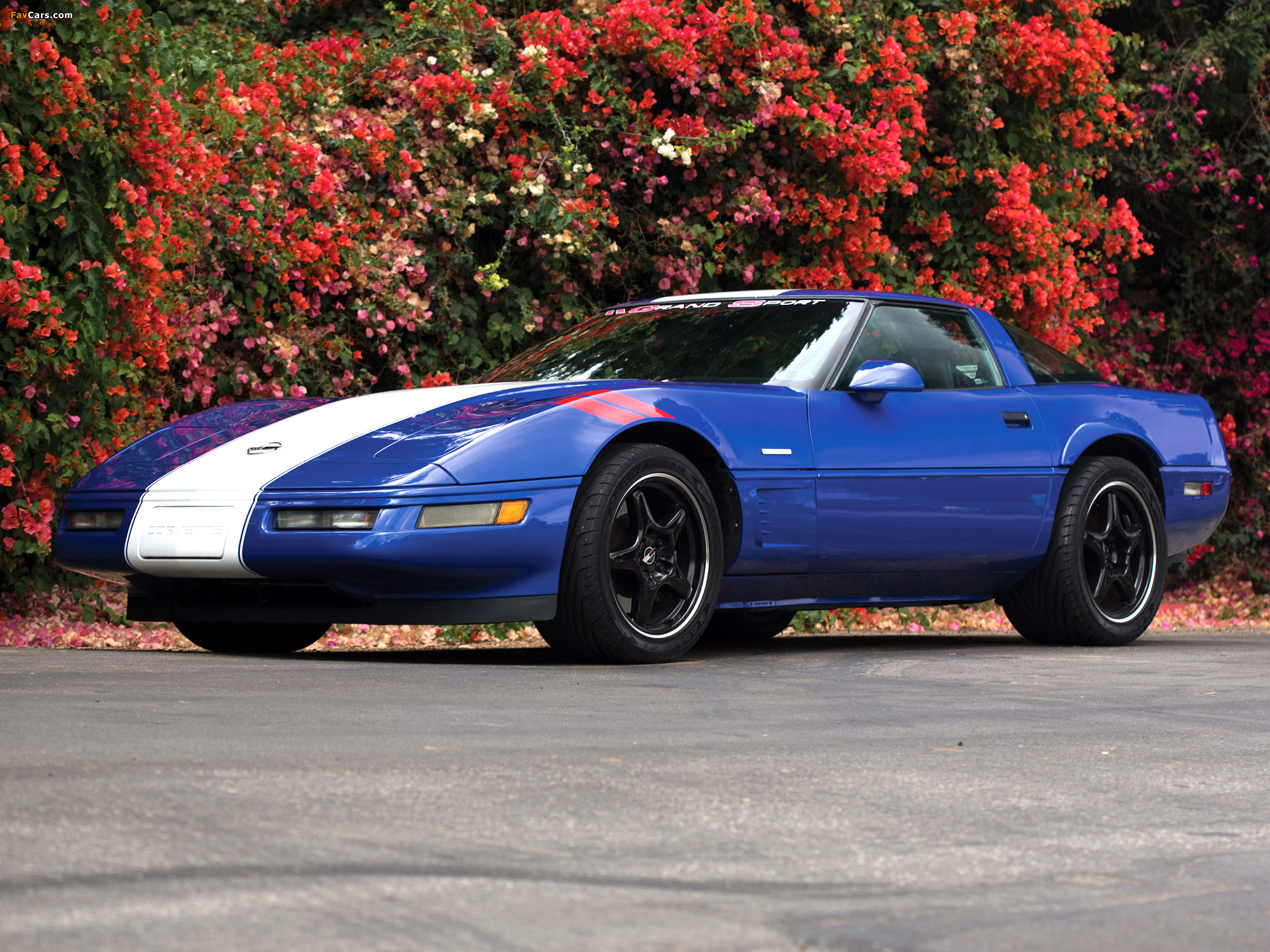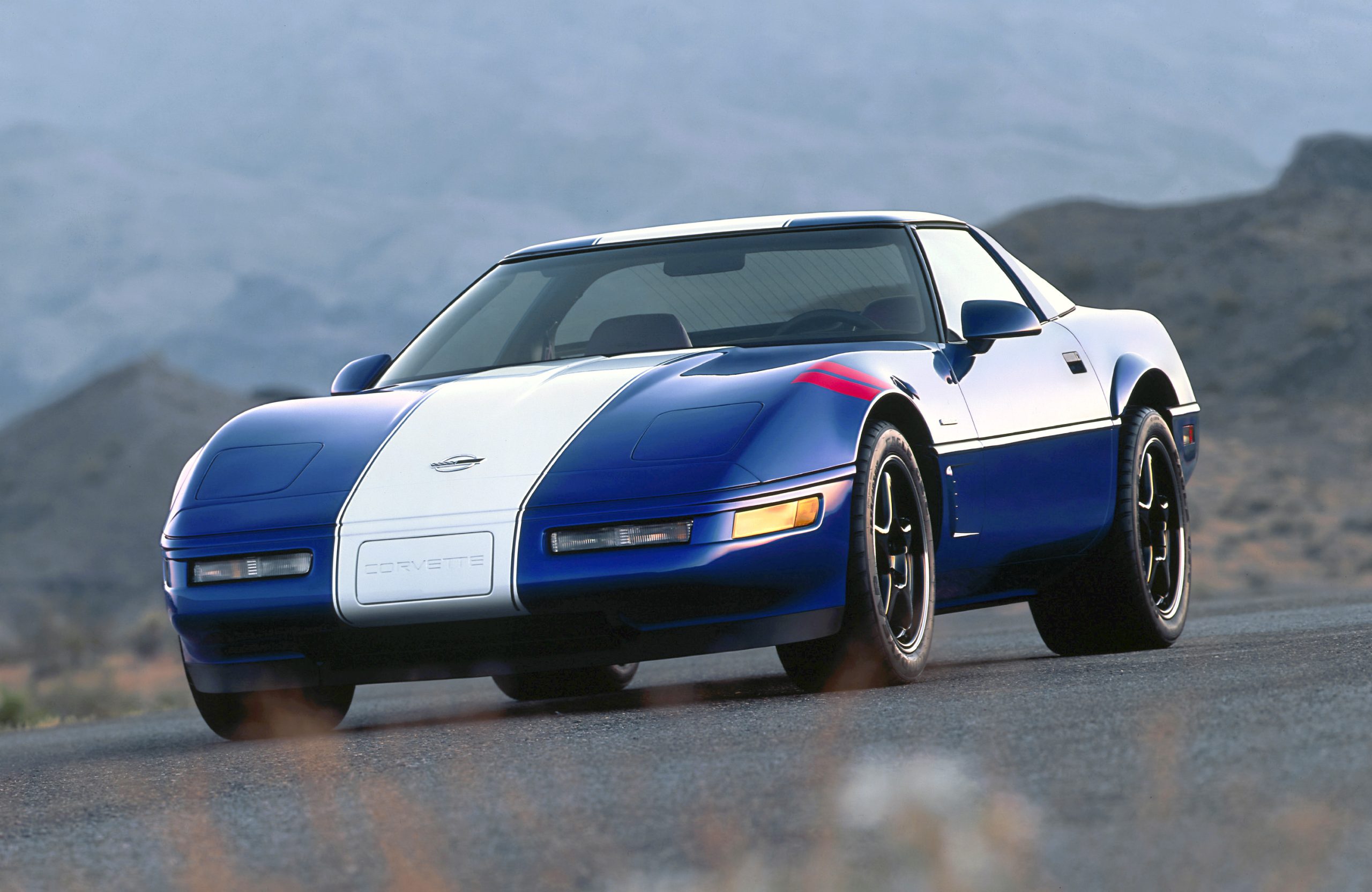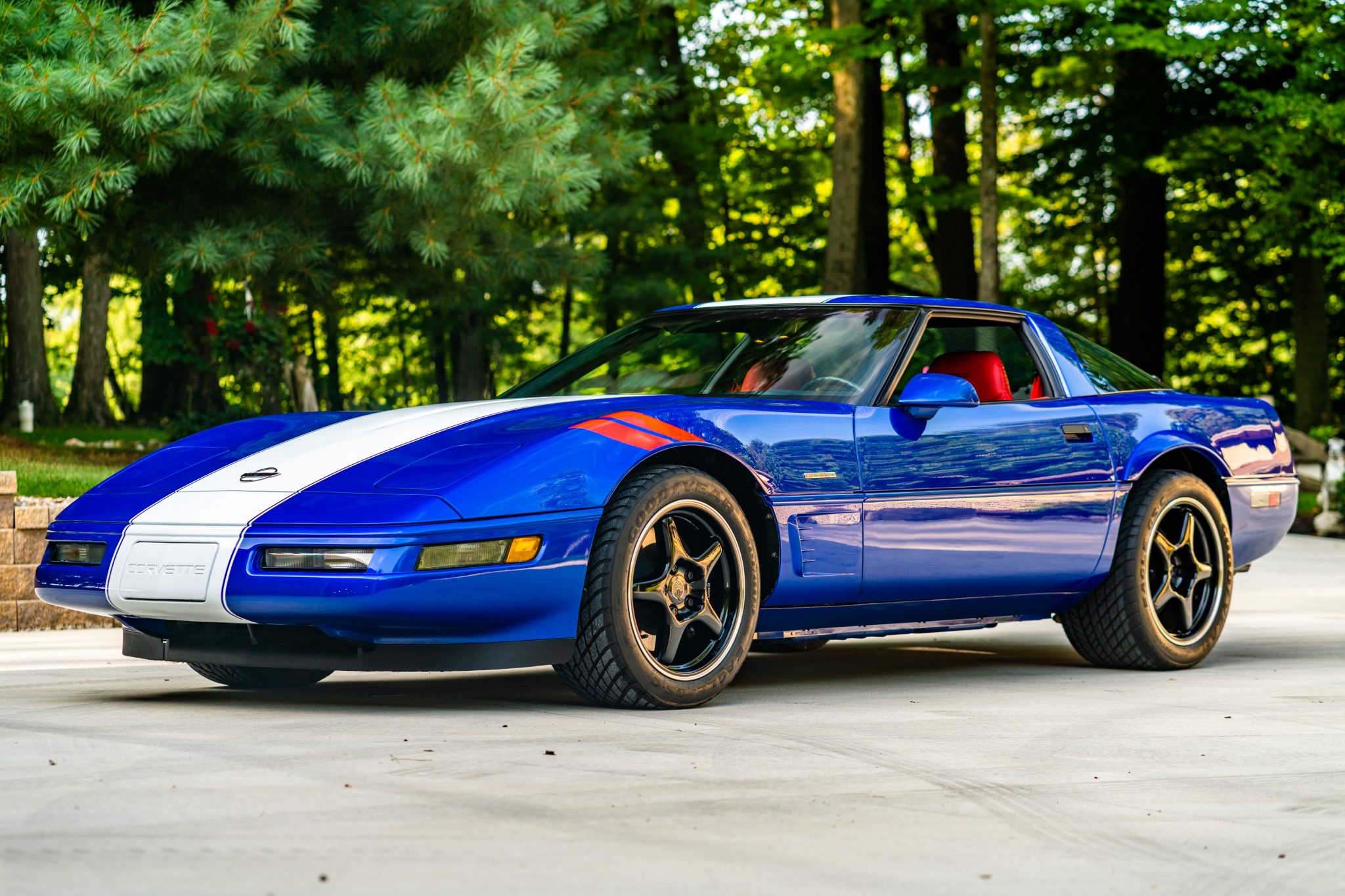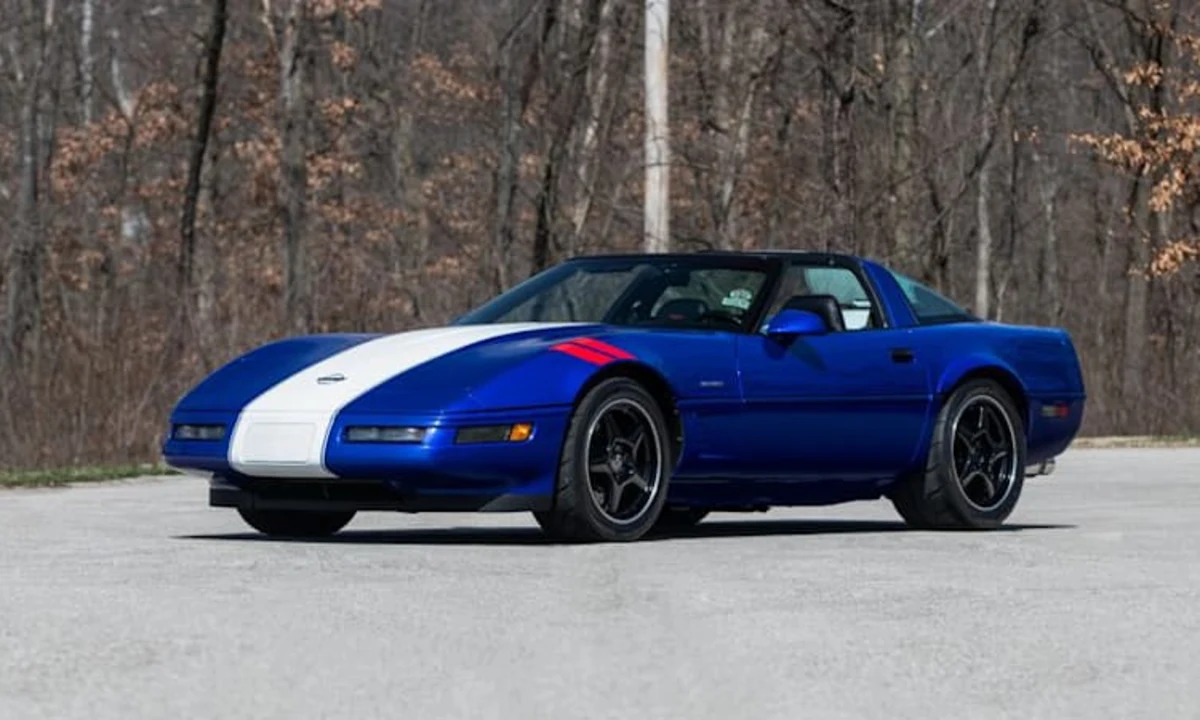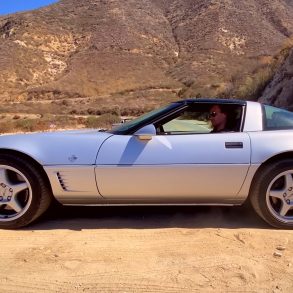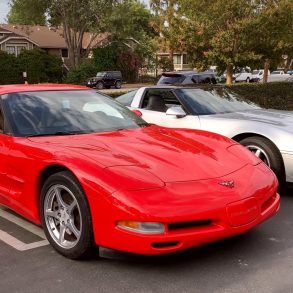1996 Chevrolet Corvette Grand Sport Guide
If the Special Edition Corvette was a welcome addition in 1996, the limited-edition Grand Sport was nothing short of a game-stopper.
Priced at an additional $3250 for the coupe or an additional $2880 for the convertible, the Grand Sport package included exclusive Admiral Blue paint and featured a single white stripe that ran the length of the body as well as two red accent stripes (also known as “Sebring Stripes”) on the driver side front fender. This unique paint scheme was deliberately developed by GM to pay homage to the classic Corvette Grand Sport Racer of the 1960’s.
The coupe used ZR-1 wheels and tires – P275/40ZR17s in the front and P315/35ZR17s in the rear. The convertible used P255/45ZR17s in the front and P285/40ZR17s in the rear. Unlike the ZR-1, which showcased a wider backend, the Grand Sport featured rear render flares to cover the wider back tires.
The Grand Sport’s interior upholstery was offered either in an all black or a sporty red/black combination, and all of the Grand Sport interiors featured a specialized embroidered headrest which featured the Grand Sport emblem. All Grand Sports –both coupes and convertibles- were equipped with a six speed manual transmission. Likewise, all Grand Sports were equipped with the newly revised LT4 5.7 liter small-block V-8 engine. When ordered with the Grand Sport model, the engine received a special “dress” kit that included bright red paint and red ignition wires. In all, Chevy built 1,000 Grand Sports, and each was given a special, sequential serial number.
Although the LT4 engine was included as part of every special edition Corvette, it was not limited to the Grand Sport or the Collector’s Edition Corvette. Any Corvette built in 1996 could be ordered with the LT4 engine (for an additional $1450). Since the new LT4 engine redlined at 6,300 rpm (700 rpm more than the LT1 engine), models equipped with the LT4 engine included a special 8,000 rpm tachometer instead of the standard 6,000 rpm tachometer.
Despite its improved horsepower over the LT1 engine, the LT4 was not considered a showstopper for many automotive reviewers that year. The fact remained that while the LT4 produced an extra 30 horsepower than the LT1, there was no notable difference in acceleration. In fact, both the LT1 and LT4 equipped Corvettes ran similar 0-60mph times. Another noted complaint of the LT4 engine was the fact that, because it lacked an engine oil cooler, it tended to overheat at sustained top speeds of around 186 miles per hour.
Further it was noted that the larger tires actually inhibited the Grand Sport’s ability to launch quickly from a standing start. At the same time, the tires were also recognized for improving the Grand Sports cornering abilities, although it was determined that they also caused excessive over-steering during extreme handling situations (while at high speeds).
Besides the 1990-1995 ZR-1, the 1996 Grand Sport was the only Corvette ever built with a unique Vehicle Identification Number (VIN) sequence, separate from all other regular production Corvettes of that year. The 1996 Grand Sport is readily identified by it’s striking Admiral Blue and Arctic White stripe paint scheme. What many do not know, however, is that the pinstriping on either side of the large white center stripe, is actually a two-color decal, both blue and white. This was done to ensure a perfectly straight line. In early production 1996 Grand Sports models, there is a small area behind the hatch roof (and in front of the panel that attaches to the rear window) that is taped instead of painted. The tape is 1 inch long and about 18 inches wide whose purpose was to eliminate a problem area in the paint booth during manufacturing.
1,000 Grand Sport Corvettes were also built in 1996.
